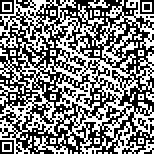| 本文已被:浏览 1857次 下载 2006次 |

码上扫一扫! |
|
|
| 基于全长转录组测序的金乌贼微卫星位点筛选与特征分析 |
|
张金勇1,2,3, 何暮春4, 项子龙1,2,5, 柳淑芳1,2,3, 庄志猛1,2,3
|
|
1.中国水产科学研究院黄海水产研究所 农业农村部海洋渔业可持续发展重点实验室 青岛 266071;2.青岛海洋科学与技术试点国家实验室海洋渔业科学与食物产出过程功能实验室 青岛 266071;3.南京农业大学无锡渔业学院 无锡 214081;4.中国海洋大学海洋生命学院 青岛 266003;5.上海海洋大学水产与生命学院 上海 201306
|
|
| 摘要: |
| 以金乌贼(Sepia esculenta)转录组测序获得的177,951条Unigene为对象,采用Micro Satellite (MISA)软件检测及分析其中的简单重复序列(Simple sequence repeat, SSR)的位点信息。结果显示,在金乌贼转录组中共检测出161,327个SSR位点,分布在64,933条Unigene中,SSR位点发生频率为36.49%,出现频率为90.66%。其中,最主要的重复类型为单核苷酸、二核苷酸和三核苷酸,分别占SSR总数的46.00%、39.93%和9.48%。SSR包含的重复基元中,A/T是单核苷酸的优势重复基元,AT/AT和AC/GT是二核苷酸的优势重复基元类型。66,004个重复基元长度≥20 bp,占SSR总数的40.91%,且其中含有低级重复基元(二、三核苷酸重复)的SSR位点数量占优。以上结果表明,金乌贼转录组中SSR位点出现频率较高且类型丰富、多态性潜能较高,研究结果可为更好地开发金乌贼SSR分子标记、种质资源保护利用、遗传多样性评价和分子标记辅助育种等提供参考。 |
| 关键词: 金乌贼 转录组 SSR 重复基元 位点信息 |
| DOI:10.19663/j.issn2095-9869.20190626001 |
| 分类号: |
| 基金项目: |
|
| Microsatellite Screening and Characterization Analysis of Sepia esculenta Based on Full-length Transcriptome Sequencing |
|
ZHANG Jinyong1,2,3, HE Muchun4, XIANG Zilong1,2,5, LIU Shufang1,2,3, ZHUANG Zhimeng1,2,3
|
|
1.Yellow Sea Fisheries Research Institute, Chinese Academy of Fishery Sciences, Key Laboratory of Sustainable Development of Marine Fisheries, Ministry of Agriculture and Rural Affairs, Qingdao 266071;2.Laboratory for Marine Fisheries Science and Food Production Processes, Pilot National Laboratory for Marine Science and Technology (Qingdao), Qingdao 266071;3.Wuxi Fisheries College, Nanjing Agricultural University, Wuxi 214081;4.College of Marine Life Sciences, Ocean University of China, Qingdao 266003;5.College of Fisheries and Life Science, Shanghai Ocean University, Shanghai 201306
|
| Abstract: |
| To better protect the resource of Sepia esculenta, we need to understand its population genetic structure. In the field of genetics, microsatellites have become important molecular markers for genetic diversity and marker-assisted breeding, because of their unique advantages, such as abundant polymorphism, rich information, codominance, and conservation. In this study, 177,951 unigenes obtained via transcriptome sequencing of the golden cuttlefish were used to detect and analyze the simple sequence repeat (SSR) loci information using Micro Satellite (MISA) software. The results showed that 161,327 SSR loci were detected in the transcriptome of S. esculenta, which are distributed in 64,933 unigenes with a distribution frequency (of SSR loci) of 36.49%, and the frequency of occurrence was 90.66%. Among them, the main types of repeats were mononucleotide, dinucleotides, and trinucleotides, which accounted for 46.00%, 39.93%, and 9.48% of the total SSR, respectively. Among the repeat motifs contained in the SSR, A/T was the predominant repeat type of a mononucleotide, and AT/AT and AC/GT were the dominant repeat types of dinucleotides. There were 66,004 repeat motifs with a length of ≥ 20 bp, accounting for 40.91% of the total number of SSRs, and the number of SSR loci in which low-level motifs (di- and trinucleotide repeats) are dominant. The above results indicated that SSR loci in the transcriptome of golden cuttlefish had a high frequency and a rich variety, and high polymorphic potential. The results provided a powerful reference for the better development of SSR molecular markers and the protection and utilization of S. esculenta germplasm resources, genetic diversity evaluation, and future molecular marker-assisted breeding. |
| Key words: Sepia esculenta Transcriptome SSR Repeat motif Loci information |